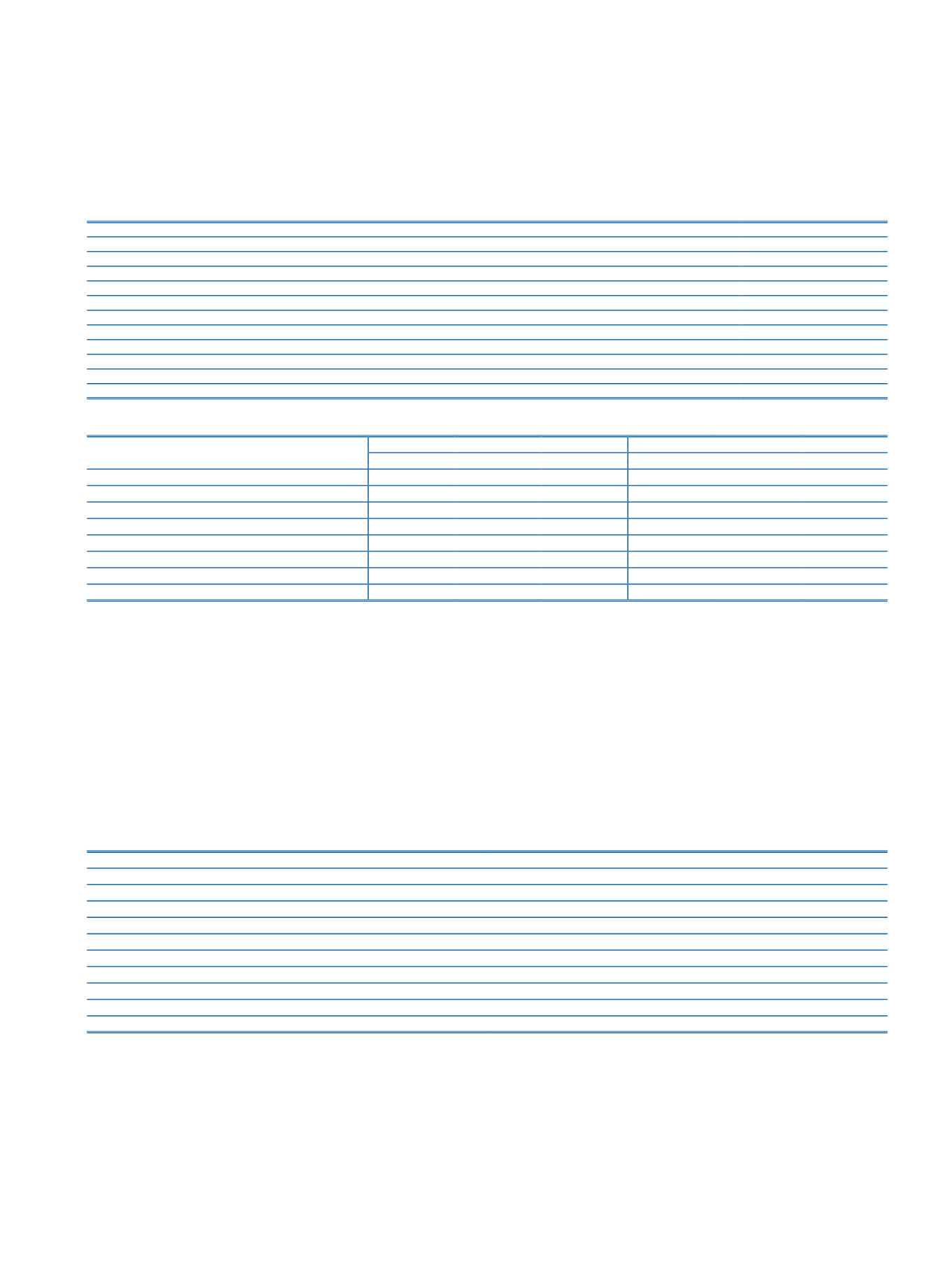
Türkiye İş Bankası A.Ş.
Notes to the Unconsolidated Financial Statements
for the Year Ended 31 December 2015
118 İşbank
Annual Report 2015
1.a. Information on the market risk:
Amount
(I) Capital Requirement against General Market Risk – Standard Method
77,524
(II) Capital Requirement against Specific Risk – Standard Method
7,760
Capital Requirement for Specific Risk Related to Securitization Positions – Standard Method
(III) Capital Requirement against Currency Risk – Standard Method
375,941
(IV) Capital Requirement against Commodity Risk – Standard Method
37,152
(V) Capital Requirement against Exchange Risk – Standard Method
1,119
(VI) Capital Requirement against Market Risk of Options – Standard Method
5,511
(VII) Capital Requirement against Counterparty Credit Risk – Standard Method
72,856
(VIII) Capital Requirement against Market Risks of Banks Applying Risk Measurement Models
(IX) Total Capital Requirement against Market Risk (I+II+III+IV+V+VI+VII)
577,863
(X) Value at Market Risk (12.5 x VIII) or (12.5 x IX)
7,223,288
1.b. Table of the average market risk related to the market risk calculated quarterly during the period:
Current Period
Prior Period
Average
Highest
(1)
Lowest
(1)
Average
Highest
(1)
Lowest
(1)
Interest Rate Risk
46,714
62,740
25,266
36,392
35,323
48,179
Share Certificate Risk
6,851
6,036
6,750
5,514
6,274
5,848
Currency Risk
407,681
457,812
358,032
313,934
392,592
289,407
Commodity Risk
37,775
34,923
25,029
24,721
25,567
1,329
Settlement Risk
760
2,643
445
1,921
Options Risk
4,351
10,582
181
1,942
1,092
952
Counterparty Credit Risk
77,732
80,844
67,551
63,835
50,832
48,576
Total Value at Risk
7,273,300
8,194,750 6,035,113
5,584,788
6,396,000
4,952,650
(1)
Market risk elements are presented for the monthly periods where total value at risk is minimum and maximum.
2. Information on counterparty credit risk
A counterparty credit risk, which is accounts for trading derivatives and repo transactions tracked on both sides, such as the credit risk the liability arising from transactions, is
determined by the methodology which is used according to the Appendix-2 of the “Regulation on Measurement and Evaluation of Capital Adequacy of Banks” which is published on
the Official Gazette no. 28337 dated 28 June 2012 and became effective starting from 1 July 2007. Counterparty credit risk valuation method based on the calculation of the fair value
of the derivative transactions is implemented. The calculation of the amount of risk on derivative transactions, the potential amount of credit risk is positively correlated with the
sum of the costs of renewal. The calculation of the amount of the potential credit risk of the contract amount is multiplied by the rates given in the regulation. Derivative instruments
valuation based on replacement costs and the fair value of the related contracts are obtained.
The Bank is exposed to counterparty credit risk is managed within the framework of general principles and guarantees the credit limit allocation. Exposure to credit risk of derivative
transactions with banks due to the majority of reciprocal agreements signed with related parties are subject to the daily exchange of collateral, counterparty credit risk exposure
is reduced in this way. On the other hand, the calculation of capital adequacy under the legislation of counterparty credit risk, the risk-reducing effect of such agreements is not
considered.
Within the scope of trading accounts with credit derivatives acquired or disposed of by the Bank does not have any protection.
Quantitative Information on Counterparty Risk (31 December 2015)
Amount
Interest-Rate Contracts
108,256
Foreign-Exchange-Rate Contracts
398,197
Commodity Contracts
95,884
Equity-Shares Related Contracts
Other
Gross Positive Fair Values
777,658
Netting Benefits
Net Current Exposure Amount
Collaterals Received
Net Derivative Position
1,379,995


